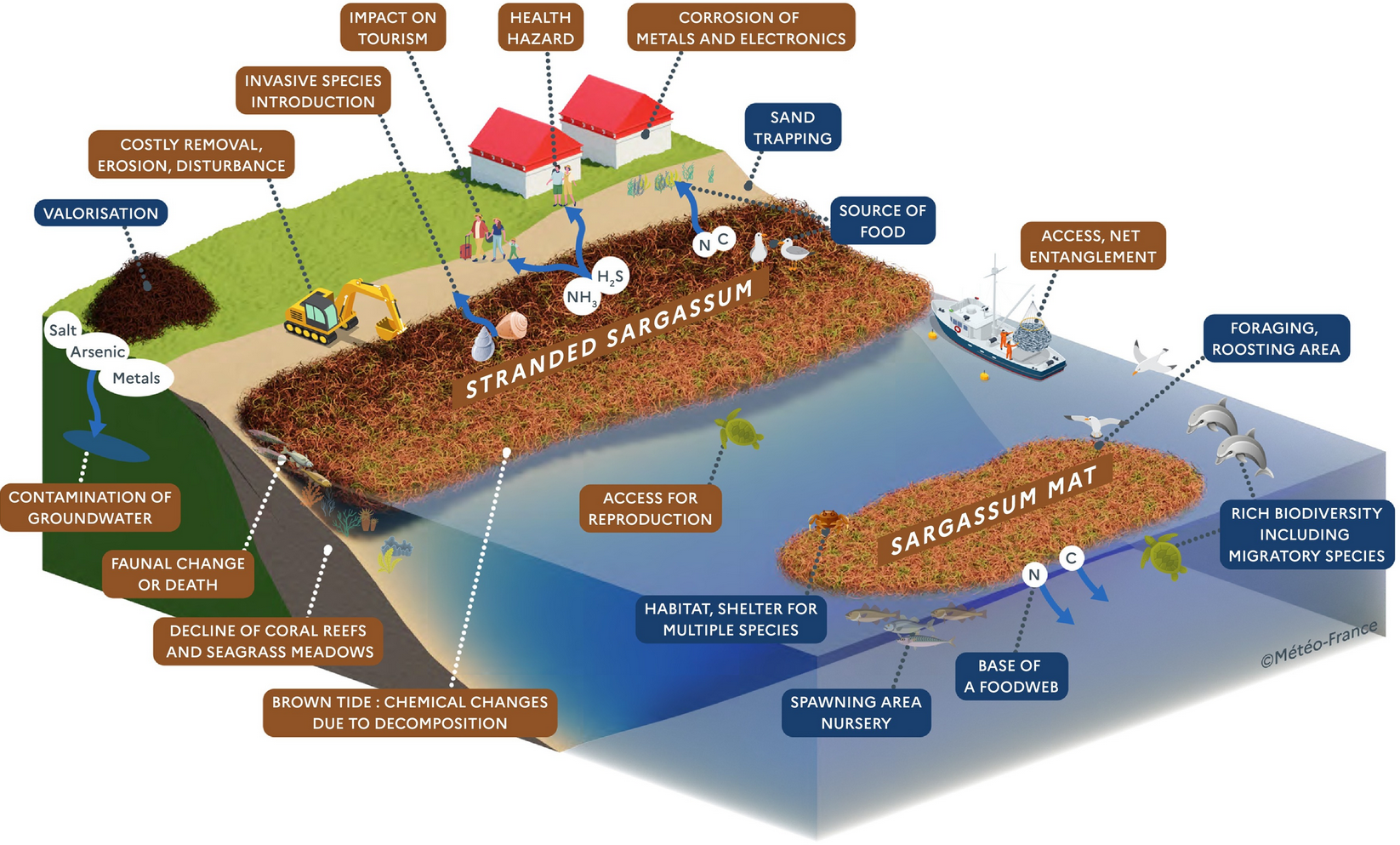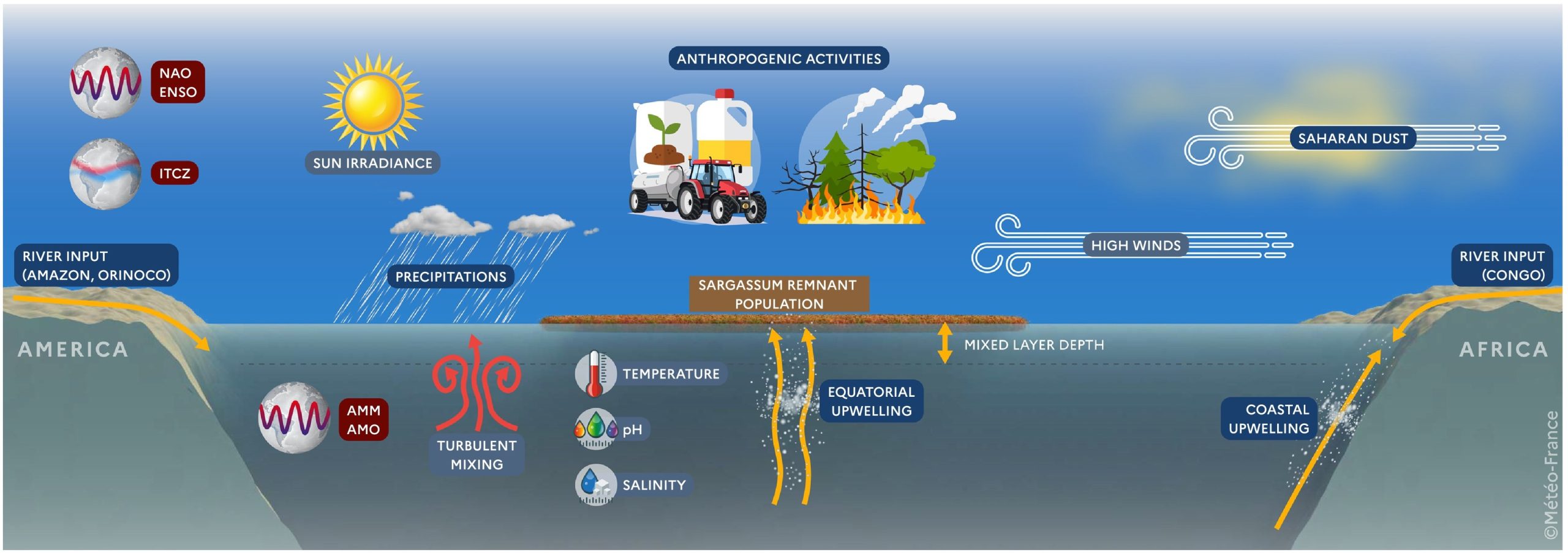A phenomenon expected to last
The proliferation of large sargassum rafts and their accumulation along the coastlines of the Caribbean region and the West African coast has arisen in 2011. Despite a notable interannual variability, this system shift in the tropical Atlantic ocean is increasing (Jouanno et al, 2023).

An increasing threat for marine ecosystems and society

Sargassum strandings are now a persistent environmental and socio-economic crisis (Debue et al.2025).
Aggregations disrupt coastal marine ecosystems by shading, depleting oxygen, and threatening biodiversity. Their accumulation and decomposition on beaches releases gases harmful threatening heatlh security. The economic costs are also significant: coastal tourism declines, fisheries are disrupted, and millions of dollard are spent every year on clean-up operations.
Complex interactions modulating the variability
Variability occurs on both interannual and seasonal scales, driven by a complex set of factors that make beaching events particularly difficult to anticipate and forecast. Monitoring oceanic and atmospheric conditions at high temporal and spatial resolution is therefore essential to improve modelling and to better understand the underlying processes.

——————————————————————————————————————–
- Jouanno, J., Morvan, G., Berline, L., Benshila, R., Aumont, O., Sheinbaum, J., & Ménard, F. (2023). Skillful seasonal forecast of Sargassum proliferation in the Tropical Atlantic. Geophysical Research Letters, 50(21), e2023GL105545. doi.org/10.1029/2023GL105545
- Debue, M., Guinaldo, T., Jouanno, J., Chami, M., Barbier, S., Berline, L., … & Minghelli, A. (2025). Understanding the Sargassum phenomenon in the Tropical Atlantic Ocean: From satellite monitoring to stranding forecast. Marine Pollution Bulletin, 216, 117923. doi.org/10.1016/j.marpolbul.2025.117923
